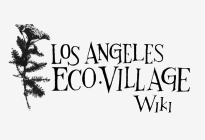SMART LOCATION PREREQUISITES
- SLL Prerequisite 1: Smart Location
Option 3 – Proximity to Diverse Uses
1. On a vicinity map, identify Appendix A Diverse Uses that exist within a ½-mile radius of the project boundary.
2. Use shortest path analysis to create a table of walk distances from all street intersections on the project boundary to the diverse use locations. Using the shortest path results, sum the number of diverse uses within ¼ and ½-mile walk from the project boundary street intersection origins.
· A site and/or vicinity map of the vicinity showing the project’s boundary and walking routes to any uses listed in Appendix A.
· A table of walk distances between the project boundary and each relevant use listed in Appendix A.
- SLL Prerequisite 2: Proximity to Water and Wastewater Infrastructure
OPTION 1
Locate the project on a site served by existing water and wastewater infrastructure. Replacement or other on-location improvements to existing infrastructure are considered existing for the purpose of achieving this option.
Contact the local water and wastewater provider to obtain a map of their service areas or legally adopted planned service areas. This information can be used to identify potential project sites within this area or to determine if the project seeking certification is in the service area.
·A site and/or vicinity map indicating the location of existing water and wastewater
infrastructure.
- SLL Prerequisite 3: Imperiled Species and Ecological Communities
Check with the state Natural Heritage Program, and any local wildlife agencies to determine if species listed under the federal Endangered Species Act, the state’s endangered species act, or species or ecological communities classified by NatureServe? as G1 (critically imperiled) or G2 (imperiled), have been found on the site or have a high likelihood of occurring on the site due to the presence of suitable habitat and nearby occurrences. If no such species have been found or have a high likelihood of being present, the prerequisite is achieved. If any such species have been found or have a high likelihood of being present, meet the requirements of Option 1 or Option 2 set forth below.
OPTION 1
Comply with an approved Habitat Conservation Plan (HCP) under the Endangered Species Act for each identified species or ecological community. To determine if the site is or can be incorporated into an approved Habitat Conservation Plan in the area, contact the local field office of the U.S. Fish and Wildlife Service or the state fish and wildlife agency.
·A map showing the geographic extent of the HCP and the project’s location within it.
·A brief narrative describing how the project will meet the requirements of the HCP.
Option 2
Information about the site received from the relevant natural heritage program or
agency.
- SLL Prerequisite 4: Wetland and Water Body Conservation
OPTION 1 - Declaration that there are no (naturally occurring) wetlands or water bodies.
OPTION 2 – FOR PREVIOUSLY DEVELOPED SITES WITH WETLANDS/WATER BODIES
Locate the project on a previously developed site where the area within a 1 mile radius from the perimeter of the site has either a) an average street grid density of at least 30 centerline miles per square mile, or b) an average built density of at least 30 dwelling units per acre for any residential components and 1.5 FAR for any non-residential components. If local, state, and federal regulations permit impacts to
any on-site wetlands, water bodies, or buffer land that is within 100 feet of these areas, such impacts must be compensated by on-site or off-site wetland restoration of equal or greater amounts; To determine the density and FAR within a 1 mile radius of the project boundary (for Option 2), contact the local planning or building department to obtain parcel-and building-level data for the project area. Other sources of information for density and FAR include the tax assessor’s office, the Metropolitan Planning Organization, police and fire departments and private data vendors. Information for this calculation may also be manually collected through field surveys of the area or using aerial photography.
See page 56.
Options 2 and 3
· A site and/or vicinity map showing a) any previously developed areas of the site; b) the street grid density or built density of the area within a 1 mile radius of the perimeter of the project site; and c) construction impact zone; and d) the location of any wetlands, water bodies, or land within 100 feet of these areas.
· A calculation of either street grid density or built density within a 1 mile radius of the perimeter of the project site.
· If on-site impacts occur, a brief narrative describing the planned compensating wetland restoration activities, including the size of the impacted wetlands and of the restored wetlands. For Option 3, also include a narrative describing the stormwater best management practices employed and the amount of rainfall that will be captured. - SLL Prerequisite 5: Agricultural Land Conservation
OPTION 2
Locate the project such that it meets the requirements specified in Options 1, 2, or 3, of SLL Prereq.1; If a project meets the requirements of SLL Prerequisite 1: Smart Location through Options 1, 2, or 3 of that prerequisite, no additional requirements need to be met for this prerequisite. - SLL Prerequisite 6: Floodplain Avoidance
OPTION 2 - FOR INFILL AND PREVIOUSLY DEVELOPED SITES
Locate the project on an infill site or a previously developed site and follow the National Flood Insurance Program (NFIP) requirements for developing any portions of the site that lie within the 100-year floodplain as defined and mapped by the Federal Emergency Management Agency or state or local floodplain management entity, whichever has been done most recently.
Option 2
· A site and/or vicinity map indicating that the project is an infill site or areas that are previously developed.
· If any portion of the site lies within the 100-year floodplain, submit a brief narrative describing how the NFIP requirements will be met for that portion.

